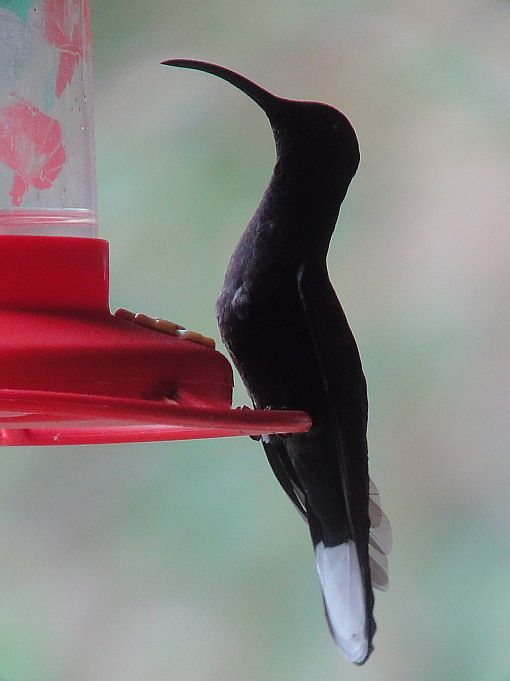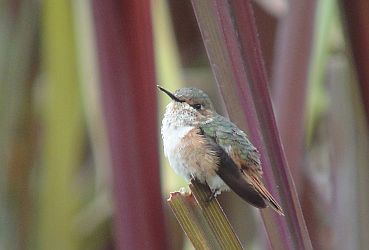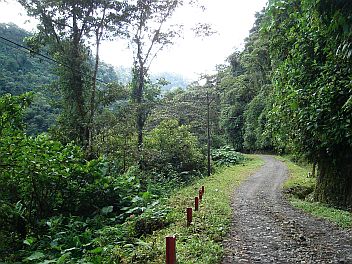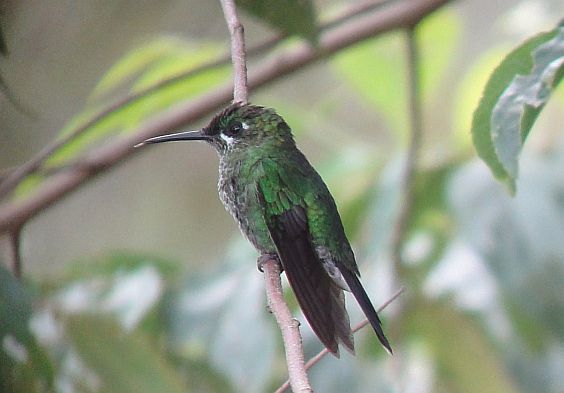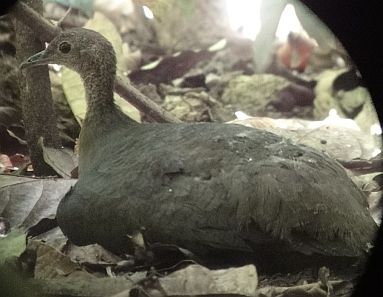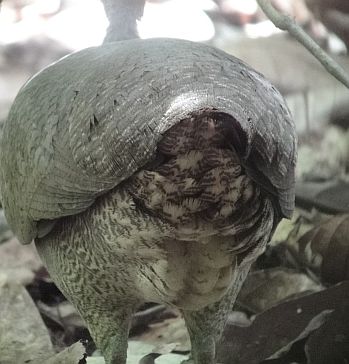On of the nicest things about hummingbirds is that most species will happily visit feeders and guard them with belligerant viligance. This is such a boon because they can be so difficult to watch in forested habitats. Those glittering feathered sprites seem to be particularly speciose in cloud forests but you wouldn’t know it just by walking through the forest. This is because a typical stroll through mossy, foggy cloud forest results in a fair number of flyby hummingbirds but rather few good sightings where you positively identify them. The experience usually plays out like this:
“chip…CHIP…chip…chp”
“A hummingbird just flew by!”
“Where is it?”
“I don’t know, it’s gone.”
“Did you get a look at it”?
“No.”
The frustrating snippet above then happens five more times before you get a good look at a perched bird and even then, it’s usually a small, dark silhouette that either goes unidentified or leaves you feeling cheated because the supposedly jewel-like plumage of the Purple-throated Mountain-Gem looked about as colorful as a shadow in a dark closet.
Now don’t get me wrong, watching hummingbirds in tropical forest doesn’t have to always be this way. If you are careful about it, intently watch the flowers they prefer, and have a quick eye, you can certainly get satisfying looks at hummingbirds. However, it’s always easier when you have a mix of flowering bushes and hanging feeders placed near forest and trees that hummingbirds can use for protection (from predators and hazards such as large raindrops). Costa Rica has its fair share of hummingbird magnets that match this description and some of the best are found near Poas Volcano.
The most well known is the La Paz Waterfall Gardens. The massive plantings of Porterweed at this tourist attraction attract a huge number of hummingbirds, including uncommon species such as Black-bellied. BUT, you have to pay $30 (or more) just to hang out and watch them. If you don’t want to dish out such a high entrance fee, hang out long enough by the feeders at the resurrected hummingbird gallery soda at Cinchona and you will see most of the same species. Then, head back upslope towards Varablanca, take a right towards Poas and keep going until you see a restaurant on the left called, “Cocina Costarricense”.

Check out the feeders in front of the window.
Stop in and have a bite to eat or a drink and watch the hummingbird action at their feeders. The owner told me that they get more birds during the wet season but I still had a good number of species while guiding clients in the area last week. Species seen were Volcano Hummingbird, Violet Sabrewing, Green-crowned Brilliant, Green Violetear, Purple-throated Mountain-Gem, and Magnificent Hummingbird.
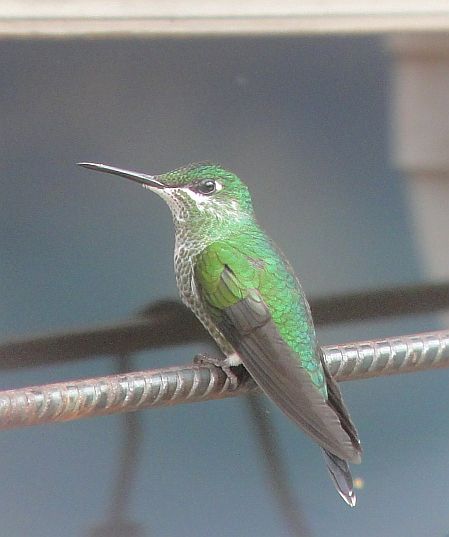
Green-crowned Brilliants like to pose. I thought this one looked kind of like a living sculpture.

Female Purple-throated Mountain-Gems look about as nice as the males.

I can think of other hummingbird species more magnificent than this one but that’s it’s name so what are you gonna do.
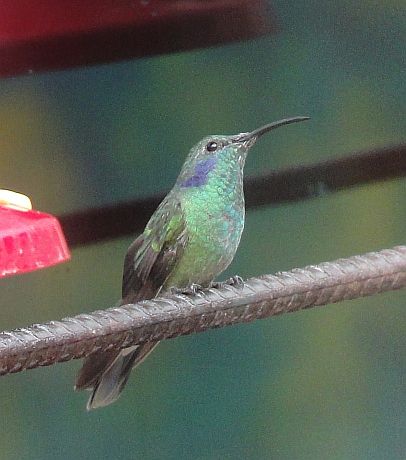
Green Violetears may be common but that doesn’t take away from their looks.
In addition to hummingbirds, that general area is also good for other highland species such as Long-tailed Silky Flycatcher, Golden-browed Chlorophonia, Ruddy-capped Nightingale-Thrush, and Yellow-winged Vireo among others.
If you don’t like to include a large window, feeders, and weathered steel rods in your hummingbird pictures, head back down the road towards Varablanca and take a right towards Alajuela. Follow that road for a kilometer or two until you see a restaurant called, “Freddy Fresas” on the left. You can park right in front, and if you like stuff made with strawberries or darn good deserts (especially for Costa Rica), make sure to visit this place. The non-strawberry food is pretty good too as is the service. There is, however, an even better reason for patronizing Freddie and his friends- they maintain a beautiful garden replete with walkways, fountains, flowers, a trail through riparian cloud forest, and hummingbird feeders. Oh yeah, and it’s free too! The entrance is a white gate located just across the street from Freddy Fresas and as long as it’s open, you can just walk right on in and hang out with the birds.

Freddy Fresas
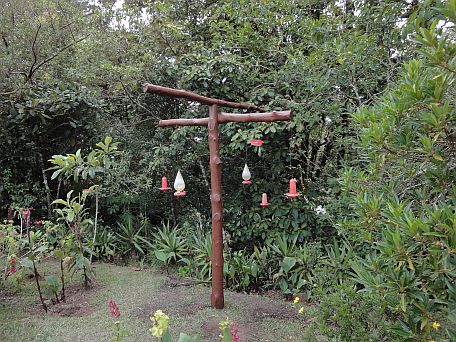
Their garden across the street has feeders

and big leaves!
I still need to bird the trail down to the stream as I have been told that quetzals are sometimes seen there. The hummingbird feeders are set up near the forest edge and appeared to host the same species as the restaurant up the hill except that Volcano Hummingbirds were replaced by Scintillants. I could also take pictures with more natural settings:
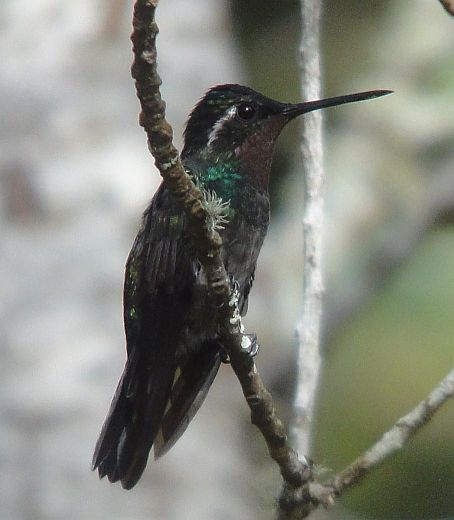
A male Purple-throated Mountain-Gem
I will be making more visits to this hidden treasure because it’s not too far from the house, it’s underbirded, and it might hold some surprises. However, the main reason I will be visiting this site from time to time is because my daughter is crazy about strawberries so keep an eye out for updates!


